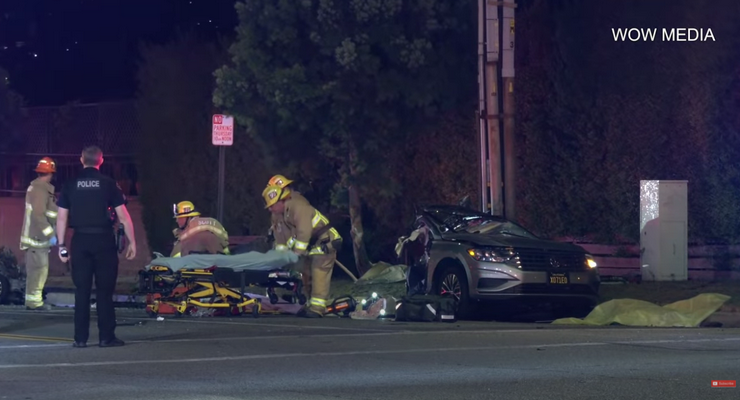
One hundred years ago, residents of the Pasadena area established a college that would be open to everyone in the community. As Pasadena City College enters its centennial year, our community is making similar investments in PCC to plan for its future.
In November 2022, the voters in the Pasadena Area Community College District approved Measure PCC, authorizing a $565 million facilities bond. Measure PCC passed with a 71% plurality, the highest percentage for a bond measure in California for that election cycle. We truly appreciate the unwavering support for PCC demonstrated by our voters, as well as their continued confidence in our ability to prudently invest their tax dollars to benefit PCC students and help maintain PCC’s proven track record of student success.
This support comes with engagement across the community. The legally mandated Measure PCC Bond Oversight Committee has been convened and is charged with providing citizen oversight of bond dollars. While the oversight committee formally represents the community’s interests, we also welcome district residents to remain engaged and aware that the bond proceeds are invested appropriately.
However, a recent guest opinion published in Pasadena Now misrepresents the ballot measure language and suggests that PCC is not complying with its requirements. To imply the college is mismanaging this investment or operating without transparency is to ignore the facts. While we encourage a community dialogue on this important investment of taxpayer funds, we will be diligent to set the record straight, when necessary.
That record begins in 2020, when the PCC Board of Trustees unanimously approved a periodic update of PCC’s Facilities Master Plan. This voluminous document pulls together data on enrollment and space utilization, charting a course over the next 15 years for the college’s facilities needs on its four campuses.
Since then, the landscape of higher education has changed due to COVID-19 and other factors, and so PCC is now in the process of updating its facilities plan to ensure it is still grounded in sound analysis of the college’s long-term needs. Periodic updates of PCC’s strategic planning documents will continue to be made over time as required by changing variables, PCC policy and procedures, and the California Community Colleges Chancellor’s office.
This work is done in full view of our community. The original facilities plan is available on the college’s website (www.pasadena.edu/fmp – PDF), and the Board of Trustees and our Facilities Subcommittee have open, public meetings with college administrators to discuss, debate, and determine the proper course of action, making adjustments as needed. This public engagement is vital because the plan deals with PCC’s built environment, recommending demolition, reconstruction, renovations, and upgrades to structures across the college.
These changes will impact some of the college’s landmarks – including the Jack Scott Administration Building, which has faced Colorado Blvd. for generations, and the reflective Mirror Pools in front of it. These icons are set to be refurbished and rehabilitated, preserving the college’s historic art deco architectural theme.
Conversely, a few buildings at PCC are identified in the facilities plan as long overdue for replacement. The current “L” building, which houses student services offices, was originally used as a library. Today, PCC students spill into hallways that were built for a different purpose while waiting for financial aid, counseling, or other support services. Elsewhere on campus, the “W” building – an outdated gymnasium – and “V” and “LP” buildings are similarly slated for reconstruction as we reimagine our campus to fit our needs.
Like any building project, PCC cannot make these changes in a vacuum. The Department of State Architecture, which approves all upgrades and new construction for public buildings in the state, has specific standards for when a building must be replaced instead of upgraded. In addition, PCC is trying to improve space utilization on an already dense campus while minimizing the loss of precious open space. Replacement and reconstruction give us a chance to reconfigure underutilized areas on campus.
As a property developer for more than 45 years, I know the challenges of implementing a major construction program, especially at a complex institution like PCC. It’s natural to see some shifts in construction phasing and sequencing. After all, as COVID-19 taught us, the Facilities Master Plan provides a roadmap, but it should not be cast in stone. Moreover, professional project managers, architects, and professional services firms must be hired to help oversee the work. PCC is in the education business, not the design and construction business, and our facilities construction oversight staff is small by intent.
My colleagues on the board and I, and in the college administration, take seriously the responsibility we have to our voters and our community. I also deeply value the professionalism and collegiality on display from college administrators and third-party construction managers. Our team is among the best in the business, and we are fortunate to have them.
Our work is progressing. Bond proceeds are already being used to make modifications and upgrades to structures across our district. The college is currently in escrow to acquire a permanent home for the very successful Rosemead satellite campus, cementing PCC’s presence in the southeast quadrant of the district.
It has been a privilege of a lifetime to be elected as a PCC trustee, and I am proud to have served while such exciting developments are underway at the college. Our track record is clear—PCC oversaw the successful investment of 2002’s Measure P bond money over the past 20 years with diligent community oversight, assuring the funds were invested as required by the ballot initiative with no waste, fraud, or mismanagement of the funds. Today, Measure PCC is on a similar track.
I am confident in the ability of PCC’s administrators, faculty, and staff, and the community oversight committee to implement the Facilities Master Plan and shepherd Measure PCC’s resources to steer the college into its next century of success.
James A. Osterling is a Member of the Board of Trustees of the Pasadena Area Community College District














 3 comments
3 comments


